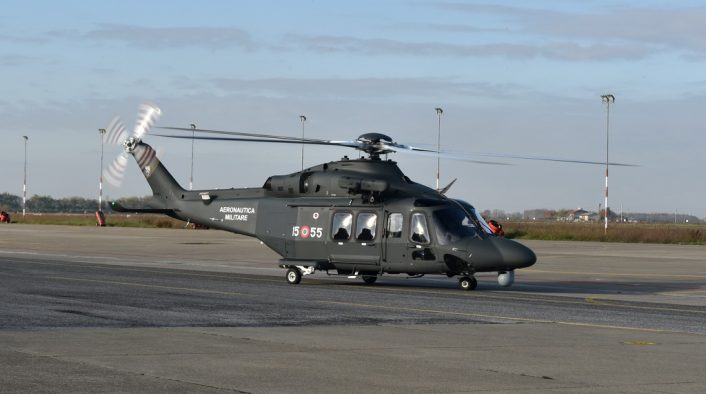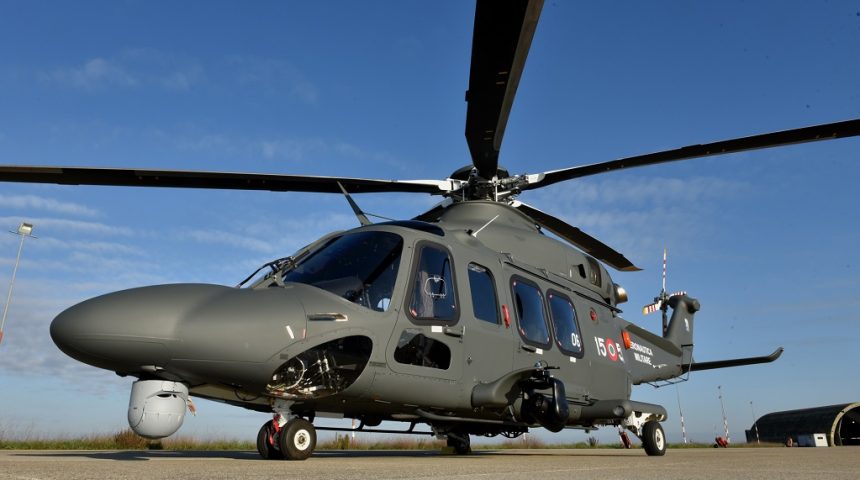The new HH-139B helicopter is part of a second batch of HH-139s that will augment the Search And Rescue fleet of the Italian Air Force.
The Italian Air Force received the first HH-139B Search And Rescue helicopter that will augment and complete the helicopter fleet of the 15° Stormo (Wing) and its dependent SAR squadrons. The new helicopter, which was formally delivered at Leonardo’s plant in Vergiate on Nov. 27, arrived on Nov. 30, 2020, at Cervia Air Base, main base of the 15th Wing and home of the SAR aircrews’ training.
This helicopter is the first of a second batch of 17 HH-139s that was approved last year by the Italian government, as the current 13 helicopters are deemed insufficient to provide both a full SAR coverage over the national territory and daily training needs. The acquisition will also cover the gap left by the retirement of the HH-3F Pelican and by the lower availability of the ageing HH-212 fleet.
The delivery of the HH-139Bs should be complete by the end of 2021, with the helicopters being distributed to Cervia and the SAR centers in Decimomannu, Trapani, Gioia del Colle and Pratica di Mare Air Bases. At least five other helicopters, in addition to the one delivered, were already photographed during the last few days while undergoing pre-delivery test flights.
The HH-139A is highly appreciated by the Italian Air Force for its performances and its versatility. One example mentioned in the approval request is the possibility to change the internal configuration in 30 minutes or less, varying from the primary SAR configuration, with five passengers and one stretcher, to a MEDEVAC (Medical Evacuation), ranging from two to four stretchers, or a utility configuration, with 14 passengers.
As we reported here at The Aviationist when the HH-139A first entered service:
It is a multipurpose chopper equipped with lot of modern equipment, including an integrated NVG-compatible glass cockpit, 4-axis digital Digital AFCS (automatic flight control system) with SAR modes & FMS SAR patterns, weather/search radar, TCAS (Traffic Collision Avoidance System) II, FLIR (Forward Looking Infra-Red), Health and Usage Monitoring System (HUMS), Digital video recorder, Video downlink, Moving map on flat display, Auto-Deployable ELT (ADELT) and Enhanced Ground Proximity Warning System (EGPWS).
The HH-139A also features a secure communications suite, integrated defensive aids suite, hoist, search light, wire cutters, nose mounted FLIR, cargo hook, loudspeaker system and emergency floatation gear and any other equipment required to perform “conventional” search and rescue, as well as Combat SAR missions.
In addition to all these features, the new HH-139B integrates some improvements after receiving the feedback from the aircrews, including a double rescue hoist, for improved safety and reliability, a mission console, for a better management of the helicopter’s systems during SAR missions, and an increased Maximum Take Off Weight (MTOW) from the original 6,800 kg (about 15,000 lbs) to 7,000 kg (15,400 lbs).

Other improvements are avionics-related to comply to the most recent navigational requirements and onboard sensors, such as the Automatic Identification System (AIS), used for a better cooperation with naval assets, and the Obstacle Proximity LIDAR System (OPLS), which uses Laser Imaging Detection and Ranging sensors to detect and avoid obstacles around the aircraft for a total 360 degrees cover.
The helicopter may also have a different integrated defensive aids suite, as the mounting points for the Missile Approach Warning System’s (MAWS) sensors seem to be missing. Differently from the HH-139A, the -B model seems to have new low-profile emergency floatation devices painted in the same color as the rest of the helicopter and the standard AW139 slim sponsons for the landing gear instead of the bigger ones used by the HH-139A. Some other smaller external differences are related to antennas that were either moved or replaced.
Like the HH-139A, the HH-139B will perform also in secondary roles as Slow Mover Interceptor (SMI) and fire-fighting support with the use of a bambi bucket system.









